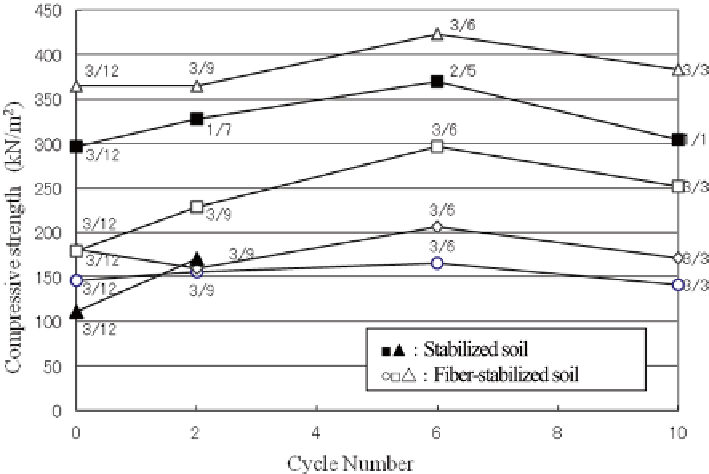Environmental Engineering Reference
In-Depth Information
Fig. 10.5
Results of drying and wetting cyclic tests
from the elements by covering (Matsubara et al.
2000
; Ogawa et al.
1996
). We thus
subjected fiber-solidified soils to drying and wetting cyclic tests in order to evaluate
their durability (Mori et al.
2005
).
Figure
10.5
shows the relation between the number of cycles and the compres-
sive strength. ▲ marked solidified soils were subjected to a 2-cycle test, and the
compressive strength values plotted; however the specimen was heavily worn, and
after 3 or more cycles, it completely collapsed so it was not possible to continue. In
contrast, the fiber-solidified soil showed no cracking or weakening even after the
end of the 10th cycle. This shows that the fiber-solidified soil resistance to wet and
dry cycling tests is very high and it is not necessary to restrict areas in which this
soil can be used. Figure
10.6
shows the sample after the completion of the drying
and wetting cyclic tests.
10.2.5
The Dynamic Strength of Fiber-Solidified Soil
In September 2003, the Tokachi-oki earthquake caused sewer inspection hatches
and manhole covers to float up, and subsidence damage to sewerage facilities was
also reported in on-site investigations. Many areas required soil as back-filling ma-
terial to be used in repairs and an effective infill material was needed (Fujiu et al.

